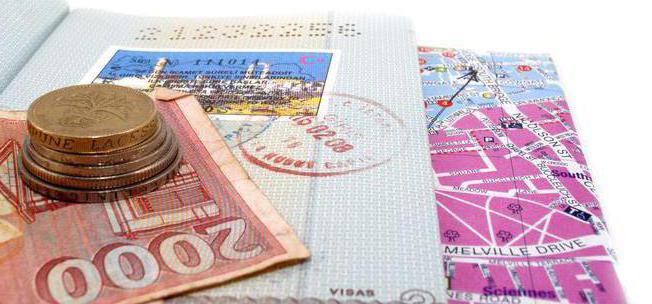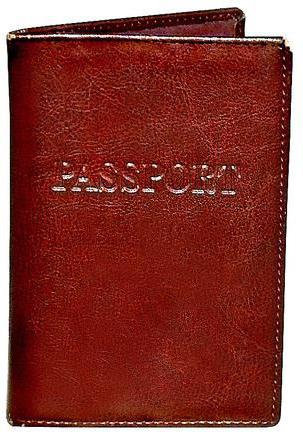Labor Code of the Russian Federation guaranteed annual leave to each employee. If it is not fully used, then the employee is entitled to compensation. Its size depends on the duration of the work. Read more about how to calculate compensation for unused vacation, read on.
Legal basis
In Art. 122 of the Labor Code of the Russian Federation describes the procedure for granting annual leave and the rules for calculating compensation. All 28 employees who have worked for more than 6 months are eligible for 28 days of paid vacation. Compensation is paid for the part that exceeds the specified period, or the days that are carried forward to the next calendar year. The basis in both cases is the statement of the employee. Compensation to an employee for unused vacation may be paid earlier if:
- woman goes on maternity leave;
- we are talking about minor employees;
- the worker adopts the child up to 3 months;
- upon dismissal.

When paying compensation, some nuances should be taken into account:
- part-time work does not affect the duration of the vacation;
- the employee can exercise his right to paid vacations at any time;
- monetary compensation for unused vacation is also accrued to employees who work under a fixed-term contract;
- upon dismissal, the employee must be fully compensated for unused vacation days.
The Labor Code of the Russian Federation also prescribes restrictions under which payment is not made:
- if a civil law contract is concluded with the employee;
- if a person has worked for less than a crescent.
If compensation is paid for the entire vacation, the company may be fined for violation of the law:
• 500-5000 rubles are paid by managers and entrepreneurs;
• 30-50 thousand rubles are repaid at the expense of the organization.
You can only postpone the vacation for the next year due to production needs. Not to provide it at all for more than two years is prohibited (Article 124 of the Labor Code of the Russian Federation).
How to calculate compensation for unused vacation
First you need to calculate the number of compensated days. This will require the following data:
- last job duration;
- number of days used.
Rest is provided for each year of work. The calculation starts from the moment of the crime to the duties. The next year counts from the first day of January. The right to rest arises after six months of continuous work. By agreement of the parties, it may be provided earlier than this period. Paid days off for the subsequent working experience can be used at any time in accordance with the internal rules of the company. Legislation allows for the possibility of providing absenteeism in one calendar year for early periods. If some months are subject to exclusion, the billing period is shifted by a similar number of days. This can be unpaid leave of more than 14 days, a period for caring for a child, absenteeism (Article 122).

Number of days
The amount of compensation depends on the length of service, position, profession and region. The average citizen is compensated for one year 28 days. Separate categories of workers have a longer vacation:
- to civil servants - 35 days (Federal Law No. 79);
- judges working in areas:
- Far North - 51 days;
- equated to the Far North - 45 days;
- in normal climatic conditions - 30 days.
The length of their vacation is also affected by experience. Judges who have worked from 5 to 10 years are given an additional 5 days of leave, 10-15 years - 10 days, more than 15 years - 15 days. The same provision applies to persons with disabilities (Federal Law No. 181) who serve in the Russian Air Force, employees of the Ministry of Internal Affairs, and other power structures of the Far North.
Personal income tax
Compensation for unused vacation days, as well as other remuneration for labor, is subject to personal income tax. Withholding is carried out at the time of payment. Calculations of contributions must be carried out in the same month in which the accruals were made. That is, if the employee quits on September 1, and the compensation was paid in August, then all charges should be attributed to the eighth month.

Examples
For the billing period, the employee was accrued a salary of 400 thousand rubles. The calendar year is fully worked out. How to calculate compensation for unused vacation?
- Average earnings: 400,000 / 12 months. / 29.3 = 1137.65 rubles.
- Holiday amount: 1137.65 * 28 days. = 31,854.20 rubles.
- Personal income tax: 31854.20 * 0.13 = 4141.05 rubles.
- Compensation for unused leave upon dismissal is calculated using the following formula:
SDZ * BWW, where
SDZ - average daily earnings;
BWW - the number of days of rest.
In this example, the employee will receive the full amount minus personal income tax:
31854.20 - 4141.05 = 27713.15 rubles.
Consider a more complex example.
The employee worked in the organization from 02/01/14 to 09/30/14. He has the right to receive 28 days of vacation. His salary in full months of work amounted to 40 thousand rubles, and in September - 45 thousand rubles. Compensation for unused leave upon dismissal is calculated as follows:
- Number of days: (28/12) * 8 = 19 (rounding up).
- Average earnings: (40,000 * 7 + 45,000) / (8 * 29.4) = 1380 rubles.
- Compensation amount: 1380 * 19 = 26,220 rubles.
- Personal income tax: 26220 * 0.13 = 3408.6 rubles.
- Amount on hand: 26,220 - 3408.6 = 22811.40 rubles.
Billing period
The calculation of compensation for unused leave upon dismissal is carried out on the basis of 12 months fully worked out. Their duration is considered from 1 to 30 (31) number and 28 (29) number in February. The days when the employee was located are excluded from the calculation:
- on sick leave;
- on maternity leave;
- on vacation without pay.
Although the calculation process is quite simple, such errors are often encountered:
- compensation is paid for non-scheduled days;
- a different formula is used;
- vacation days are rounded down;
- the calculation is made for unused days of the last year of work.

The number of days is considered by dividing the duration of rest by 12, and then multiplying by months of experience:
- 2.33 with a vacation duration of 28 days;
- 2.92 if an additional 7 days of rest is provided.
When compensation for unused vacation is accrued, rounding of vacation days to a greater extent is not provided for by law. But the head can regulate this item by internal decrees.
Special cases
According to Art. 120 of the Labor Code of the Russian Federation, vacation is calculated and provided in calendar days. For seasonal workers (v. 291), and persons who have concluded contracts for up to 2 months (Art. 295), holidays are calculated on business days.
The calculation of compensation for unused leave upon dismissal in the event that the employee worked for less than a month also causes a lot of questions. Consider specific examples.
Ivanov I.M. began work on May 15. In the first year, he took 3 days off for 3, 6 and 5 days. How to determine the billing period? According to the rules, the first year should be considered from 05/15/14 to 05/14/15. If the number of days of unused rest does not exceed 14 (3 + 6 + 5), then the end date should not be shifted.
Karaseva I.V. was hired on August 15, 2012. From 06/06/13 to 11/22/13 she was on maternity leave, from 11/23/2013 she took parental leave until 05/22/15. From 03.02, an employee went to work part-time. And on 06/16/15 she quit of her own free will. It is necessary to determine the experience.

Maternity leave is subject to exclusion. The end date of the billing period does not need to be shifted. For the first fully worked year, there are 28 days of rest. The second working year is completely excluded from the calculation:
- from 11/23 to 12/31. 2013 - 39 days;
- from 01.01. December 31, 2014 - 365 days;
- from 01.01 to 02.02. 2015 - 33 days.
Throughout this period, the employee was on leave to care for the newborn.
The next settlement date starts on 08/15/13 and lasted until the moment of dismissal on 06/16/15. This period can be divided into two segments:
- from August 15 to November 23, 2013 - 3 months 9 days (maternity leave);
- from 03.02 to 16.06. 2015 - 4 months 14 days.
The total length of service is 7 months and 25 days.
Absenteeism
Upon dismissal, an employee is entitled to payments for unused vacation. But absenteeism is excluded from the experience (Article 121).
Kovalev M.P. assumed duties on September 2, 2014. Since April 2, 2015, he was absent from work without a good reason. The management decided to dismiss Kovalev from 06/02/15 for absenteeism. It is necessary to calculate the vacation experience. The period from 02.04 to 01.06.2015 is excluded from the calculation. From September 2, 2014 to April 2, 15 Kovalev worked for 7 months. Compensation will be charged for this period.
Extended vacation
The Labor Code of the Russian Federation provides for additional days (Article 334) for certain categories of workers. For example, teachers rest for 14 or 29 days more. Compensation for unused vacation is paid if the employee has worked for more than 11 months (with 42 days of rest) and 10 months (with 56 days of rest).
Teacher Gracheva R.F. hired on 08/26/14. 06/30/15 she quit. An annual leave of 56 days was not granted to the worker. It is necessary to calculate the compensation. For the year (08/26/14 - 06/30/10), 10 months and 5 days were worked out. According to the rounding rules, the report will be conducted based on 10 months. For them, the teacher can claim compensation at the rate of 56 days.

Full payout
All things being equal, one year consists of 11 months of work and 28 days of rest. If the employee has worked less than the specified period, he is entitled to full compensation for unused vacation. The sample application that the employee writes in this case is no different from the standard.
Employees who have worked for more than 5.5 months and quit due to the following reasons may also claim full compensation:
- in connection with the liquidation, reorganization of the enterprise or temporary suspension of work;
- admission to military service;
- secondment to universities, technical schools;
- transfer to another job;
- due to unsuitability.
Examples
Petrov V.V. assumed duties on 06/11/14. A year later, on June 19, he quits. There were no passes in the billing period. How to calculate unused vacation? On the date of dismissal on June 19, the person worked for 11 months 9 days. Since 9 KDs are less than half a month, they are excluded. Thus, the basis for the calculations is 11 months, for which the employee is entitled to 28 days of rest.
The employee has been working at the enterprise since 10/13/14. He was called up for military service on 01/31/15. There were no passes for the billing period. You need to calculate unused vacation days. Total length of service is:
–13.10.14 - 12.03.15 - 5 full months;
- 13.03.15 - 31.03.15 - 19 days. > 15 days For calculation purposes, it is rounded up. The total length of service is 6 months.
Since the employee worked for more than 5.5 months, he was entitled to full compensation for 28 days.
Partial payout
If an employee has worked in the enterprise for less than 11 months, compensation is charged in proportion.
Example. The man was recruited 05/26/15. 06/20/15 he decided to quit. How to calculate compensation for unused vacation? The employee worked for less than a month. On the date of dismissal, his seniority was 23 k.d. This figure is rounded to 30. Compensation is due for:
(28 days / 12 months) * 1 month = 2.33.
If rounding is provided for in the company, then payment will be made in 3 days.
Similar calculations are carried out if the experience is from 1 to 11 months.

Example. The employee worked in the organization for 5 months and 19 days. Then he quit of his own free will. How to calculate compensation for unused vacation in this case? According to the rules, the length of service is six months. If the company’s internal rules provide for rounding of days, then payment will be made for:
28 cd / 12 months * 6 months = 13.99 or 14 days.
Change of conditions
If an employee worked in several positions for 12 months and then quit, then unused vacation for a year is calculated separately for each period.Then the result is summarized.
Example. The teacher was hired on 10/01/14. She is entitled to a 42-day vacation. On January 12, she was transferred to the post of secretary. The duration of the leave was reduced to 28. Due to the layoff on June 30, she leaves. During the work, the employee walked off 5 days of vacation. Count the number of days to be compensated.
The term of work as a teacher was 3 full months and 12 days, which are excluded from the calculations. Compensation should be paid on the basis of: 42/12 * 3 = 10.5 days. The employee worked for the position of referent for 5 months and 20 days. Total experience - 6 months. Since she was dismissed due to downsizing, she is entitled to full payment in 28 days. Summarize the result: 28 + 10.5 = 38.5 - 5 (days used) = 33.5 days.
Rest followed by dismissal
At the request of the employee, unused days in full can be provided before his dismissal. The period of rest does not increase experience. Only those days are paid that would be compensable in a standard situation.
Example. Sidorov V.I. was hired 02.09.14. And on 09.06.15 he wrote a statement on the provision of leave with further dismissal from 06.16.15. Of the established 30 days, the employee used 10. Date of dismissal - 07/15/15. On June 16, Sidorov worked for 9 months and 14 days. Total length of service - 9 months. Compensation for unused vacation will be paid at the rate of (30/12) * 9 - 10 = 12.5.
